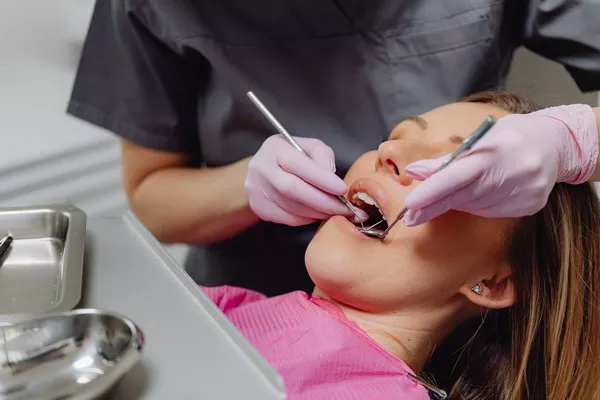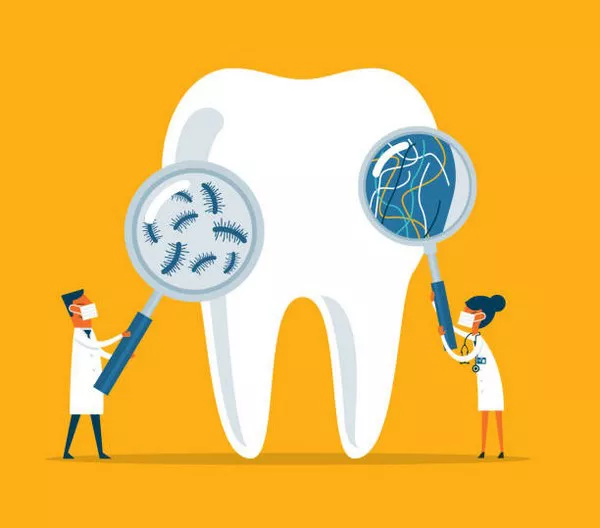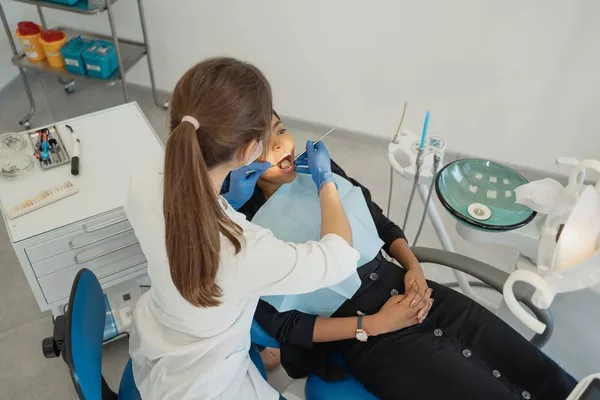Invisalign has revolutionized the orthodontic industry, offering a discreet and comfortable alternative to traditional braces. With its growing popularity, understanding the costs involved is essential for potential patients. This article provides an in-depth analysis of the expenses associated with Invisalign treatment, including a detailed cost breakdown, payment plans, insurance coverage, and more.
Cost Breakdown
Initial Consultation
The first step in the Invisalign journey is the initial consultation with an orthodontist or a dentist trained in Invisalign treatment. This consultation typically costs between $100 and $200, although some providers offer free consultations as an incentive to attract new patients. During this visit, the doctor will assess your dental condition, discuss your goals, and determine if Invisalign is the right solution for you.
The Aligners Themselves
The primary cost driver for Invisalign treatment is the aligners. Invisalign aligners are custom-made for each patient, and the number of aligners required depends on the complexity of the case. On average, the total cost of the aligners ranges from $3,000 to $7,000. This cost usually covers the entire set of aligners needed for the treatment duration.
Additional Appointments
In addition to the initial consultation and the cost of the aligners, there will be several follow-up appointments to monitor progress and make any necessary adjustments. These appointments are typically included in the overall treatment cost. However, if additional aligners or refinements are needed beyond the standard plan, there might be extra charges, ranging from $300 to $800 per set.
Maintenance Costs
Maintaining your Invisalign aligners and ensuring optimal oral hygiene is crucial. Patients will need to invest in cleaning supplies, such as specialized cleaning crystals or tablets, which can cost around $50 to $100 annually. Additionally, purchasing retainer aligners post-treatment, which cost approximately $100 to $300 each, is essential to maintain the results.
Payment Plans
Financing Options
Understanding the financial commitment involved in Invisalign treatment, many providers offer flexible payment plans to make the costs more manageable. These plans often include:
Monthly Installments: Patients can spread the cost over a series of monthly payments, typically ranging from $100 to $200 per month, depending on the total cost and the payment period.
0% Financing: Some providers offer interest-free financing for a certain period, usually up to 24 months. This option allows patients to pay for their treatment without incurring additional interest costs.
Extended Payment Plans: For those needing a longer payment period, extended plans with low-interest rates are available, spreading the cost over three to five years.
Interest Involvement
While 0% financing options are attractive, they are often subject to credit approval and may require a credit check. Extended payment plans typically involve an interest rate, which can vary based on the provider and the patient’s creditworthiness, ranging from 5% to 15% annually.
see also: Mastering the Art of Applying Orthodontic Wax
Insurance Coverage
Dental Insurance Plans
One of the most common questions about Invisalign is whether dental insurance covers the treatment. Many dental insurance plans offer some coverage for orthodontic treatments, including Invisalign. Coverage typically includes:
Percentage of Cost: Insurance plans may cover a percentage of the total treatment cost, usually between 25% and 50%.
Lifetime Maximum: Most plans have a lifetime maximum benefit for orthodontic treatments, ranging from $1,000 to $3,000.
Age Restrictions: Some insurance plans have age restrictions, primarily covering children and teenagers under 18.
Verifying Coverage
It’s crucial to check with your insurance provider to understand the specifics of your coverage. Some plans may require pre-authorization, and there may be limitations based on whether the orthodontist is within the insurance network.
Treatment Duration
Length of Treatment
The duration of Invisalign treatment can vary significantly depending on the complexity of the case. On average, treatment lasts between 12 to 18 months. The treatment length directly impacts the cost, as more complex cases requiring longer treatment periods typically incur higher costs due to the need for more aligners and follow-up appointments.
Complexity of Case
Simple vs. Complex Cases
The complexity of your dental issues significantly influences the overall cost of Invisalign treatment. Simple cases, such as minor crowding or spacing issues, may cost between $3,000 and $5,000. In contrast, complex cases involving significant misalignment, bite issues, or the need for substantial movement may range from $5,000 to $7,500 or more.
Impact on Cost
Complex cases often require additional aligners, longer treatment durations, and more frequent follow-up appointments, all contributing to higher costs. It’s essential to have a thorough consultation with your orthodontist to understand the complexity of your case and the associated costs.
Geographical Location
Regional Cost Variations
Invisalign treatment costs can vary widely based on geographical location. Urban areas and regions with a higher cost of living typically see higher treatment costs compared to rural areas. For instance, Invisalign treatment in major cities like New York or Los Angeles can range from $4,500 to $8,000, while in smaller towns or less populated regions, it might be between $3,000 and $6,000.
Consulting Local Providers
To get an accurate estimate of Invisalign costs in your area, consult with local Invisalign-trained doctors. They can provide a detailed quote based on your specific needs and regional pricing trends.
see also: Unlocking the Cost of Dental Implants at ClearChoice
Comparison with Other Treatments
Traditional Braces
Traditional braces are a common alternative to Invisalign. The cost of traditional braces generally ranges from $2,500 to $6,000, depending on the case’s complexity and treatment duration. While braces might be slightly cheaper than Invisalign, they are more noticeable and can be less comfortable.
Other Clear Aligner Brands
Other clear aligner brands, such as SmileDirectClub, ClearCorrect, and Candid, offer similar treatments at varying price points. SmileDirectClub, for instance, costs between $1,800 and $2,500, significantly lower than Invisalign. However, these alternatives often involve less face-to-face interaction with dental professionals, which can be a crucial factor for some patients.
Unique Benefits of Invisalign
Invisalign offers several advantages over traditional braces and other clear aligners, including:
Discreet Appearance: Invisalign aligners are virtually invisible, making them a popular choice for adults and teens.
Comfort: Made from smooth, medical-grade plastic, Invisalign aligners are more comfortable than traditional braces, which can cause irritation.
Convenience: Invisalign aligners are removable, allowing for easier eating, drinking, and oral hygiene compared to braces.
Advanced Technology: Invisalign uses advanced 3D imaging technology for precise treatment planning and aligner fabrication.
What’s Included
Comprehensive Care
Invisalign treatment includes several components that contribute to the overall cost:
Face-to-Face Doctor Care: Regular appointments with your orthodontist to monitor progress and make adjustments.
Custom-Made Aligners: A series of aligners tailored specifically to your teeth and treatment plan.
Initial Consultation: The initial assessment and treatment planning session.
Follow-Up Appointments: Scheduled visits to ensure the treatment is progressing as planned.
Retainers: Post-treatment retainers to maintain the results and prevent teeth from shifting back.
Aftercare
Aftercare is a critical aspect of Invisalign treatment. This includes regular use of retainers and occasional follow-up visits to ensure long-term success. Some providers offer aftercare packages that include retainers and periodic check-ups as part of the overall cost.
Cost Estimator Tools
Personalized Quotes
Several online tools and resources can help you estimate the cost of Invisalign treatment based on your specific needs and location. These tools typically ask for details about your dental condition, treatment goals, and geographical area to provide a personalized quote. Some recommended tools include:
- Invisalign Cost Calculator on the official Invisalign website.
- Dental Cost Estimator by Cigna.
- Cost Estimator by the American Association of Orthodontists.
Using these tools can give you a clearer understanding of the potential costs and help you make an informed decision about your treatment.
Conclusion
Understanding the costs associated with Invisalign treatment is crucial for anyone considering this orthodontic solution. While the price may seem substantial, the benefits of Invisalign, including its discreet appearance, comfort, and advanced technology, make it a worthwhile investment for many. By exploring the various cost components, payment plans, insurance coverage, and available resources, you can make a well-informed decision and achieve the smile you’ve always wanted. For the most accurate estimate, consult with a local Invisalign-trained doctor who can provide a detailed quote based on your specific needs and circumstances.
FAQs about Invisalign
1. Is Invisalign worth the money?
Invisalign is considered worth the investment by many patients due to its numerous advantages over traditional braces. These benefits include:
Aesthetic Appeal: Invisalign aligners are nearly invisible, making them a popular choice for those who want a discreet orthodontic treatment.
Comfort: The aligners are made of smooth plastic, which can be more comfortable than metal braces that may irritate the gums and cheeks.
Removability: Invisalign aligners can be removed for eating, drinking, brushing, and flossing, allowing for better oral hygiene and fewer dietary restrictions.
Convenience: Fewer office visits are typically required compared to traditional braces, as patients receive multiple sets of aligners in advance.
The decision on whether Invisalign is worth the money depends on individual preferences, treatment goals, and budget.
2. Is Invisalign cheaper than braces?
In general, Invisalign tends to be more expensive than traditional metal braces. However, the cost difference can vary based on several factors, including:
Complexity of the Case: More complex cases may require additional aligners or treatment time, increasing the cost.
Location: The cost of orthodontic treatment can vary by region and the specific dental practice.
Treatment Duration: Longer treatments can increase the overall cost.
While traditional metal braces often have a lower starting cost, the benefits of Invisalign, such as comfort and aesthetics, may justify the higher price for many patients.
3. Why is Invisalign $5,000?
The cost of Invisalign, which typically ranges around $5,000, reflects several factors:
Advanced Technology: Invisalign uses advanced 3D imaging and computer-aided design to create customized aligners for each patient.
Customization: Each set of aligners is tailored to the patient’s specific dental structure and treatment plan, requiring precise manufacturing.
Convenience and Comfort: The removable and nearly invisible nature of the aligners adds to their appeal and value.
Professional Expertise: The cost includes the orthodontist’s expertise in diagnosing, planning, and monitoring the treatment to ensure optimal results.
4. Is $6000 normal for Invisalign?
Yes, $6,000 is within the typical range for Invisalign treatment. The average cost of Invisalign usually falls between $3,000 and $7,000, depending on various factors such as:
Severity of the Orthodontic Issue: More complex cases requiring longer treatment times can increase the cost.
Geographic Location: Prices can vary by region and the cost of living in the area.
Orthodontist’s Experience: Highly experienced orthodontists may charge more for their expertise.
You Might Be Interested In































